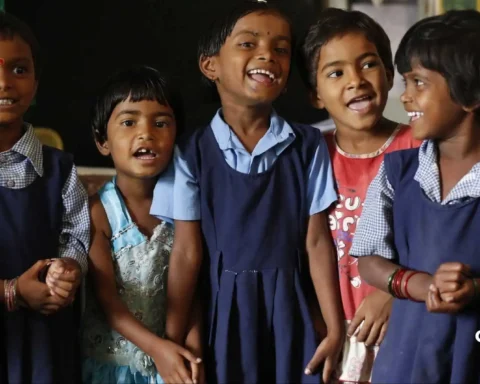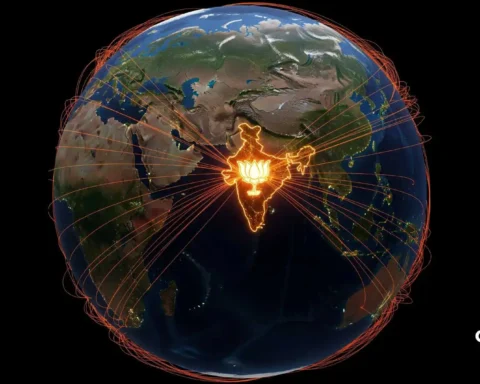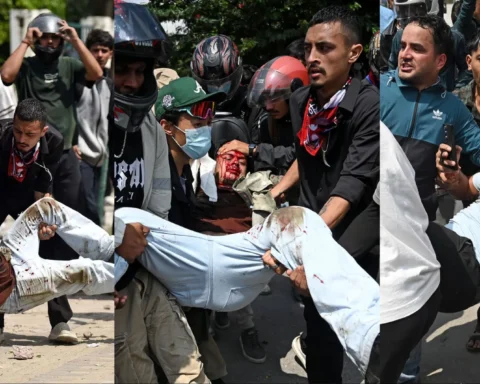Fields to Streets
The farmers’ protest in India was a significant event, where farmers from various states came together to protest against three new agricultural laws introduced by the government in September 2020. The laws raised concerns about the Minimum Support Price (MSP) system and the vulnerability of farmers to large corporations. The protest was centred around Delhi, with camps and demonstrations demanding the repeal of the laws. Despite multiple rounds of negotiations, a resolution was not reached. The protest received international attention and support, highlighting the challenges faced by farmers in India.
In his article, we showcase the happenings of the unprecedented protest.
Challenges Faced by the Farmers
The challenges faced by the protesting farmers were manifold. Their primary concern was the three bills and the need to get them repealed by the government. In the process, their initial local protests in Haryana and Punjab were not fruitful. The protests were in the form of dharnas (mass protest sittings) at local government offices, toll plazas, on streets, and on railway tracks.
Later, when they decided to move to New Delhi with their tractors and essentials for the long haul, little did they expect to be there for more than one year. The Delhi police stopped them at all five entry points to the capital city. When the protestors tried to push away the barricades, tear gas and water cannons were deployed.
The farmers and labourers who participated in the protests in India in 2020 lived in temporary shelters, cooked and served food on long mats spread on the ground, and slept on hay in tractor-trailers covered with canvas tarps. This was reminiscent of the style of Sikh temple kitchens, where food is prepared and served to large groups of people in a communal setting. The protesters also used the tractor-trailers as temporary shelters, similar to how hay is used in Sikh temple kitchens for seating and sleeping arrangements.
Throughout the months of protests, NGOs like the Khalsa Aid and Sikh temple (Gurudwara) management committees, like the Shiromani Gurdwara Parbhandhak Committee (SGPC) and Delhi Gurdwara Management Committee (DGMC), provided ‘langar’ or free food from community kitchens rooted in the Sikh tradition at the protest sites. Furthermore, the Sikh and Punjabi diasporas across the globe mobilised donations towards the protest sites.
After a few months of protest, they took to the Red Fort on January 26, 2021 (Republic Day), when the government refused to budge. Since the events, protest sites in Tikri and Ghazipur saw increased barricades, cement slabs, concertina wires, metal spikes, and barricades, impacting farmers’ access to water and toilets. As many as 200 protesters were detained, while many were booked under the Unlawful Activities Prevention Act (UAPA) and Sedition sections in Delhi.
The protestors from Punjab and Haryana were disillusioned after a while and returned to their states. The protestors from Uttar Pradesh remained under the determined leadership of Rakesh Tikait. The police were planning to arrest him but found it impossible to reach him due to the ground support he had. At his behest, more people, along with tractors, came from the villages, adding strength to the protests.
According to the government, they decided to give in around Guru Purab (a religious occasion for the Sikhs). Sceptics say the forthcoming elections in Punjab and Uttar Pradesh were why the government conceded.
Expert Voices
Over the years, experts have suggested that deeper structural reforms are needed following consultations with stakeholders and political parties.
“The laws are a shoddy attempt at liberalisation. You just enacted them without thinking of farmers,” said Vikas Rawal, a professor of economics at Jawaharlal Nehru University in New Delhi who studies agrarian distress. “What you have to do is make farming remunerative for farmers by achieving a balance between public support, private investment, and ecological concerns.”
P. Sainath, a renowned Indian journalist, has received numerous awards for his reporting on rural and agrarian issues, demonstrating his dedication to highlighting the challenges rural communities face in India. Regarding the protest, he pointed out that ‘the new farm laws disable the right to legal recourse of all citizens, not just farmers—to an extent unseen since the 1975-77 Emergency. The farmers at Delhi’s gates are fighting for our rights. He added that ‘it was time for the non-farmers to protest against the new agri-laws’.
Like S.S. Johal (one of India’s most prominent agricultural economists), some have suggested ways to reduce farmers’ debts, augment their incomes, maintain stability, and modernise carefully, but with little uptake.
Agriculture expert Devinder Sharma said, “In the agricultural sector, we are working on the open market policy. We are trying to imitate America and Europe. In the US, the open market policy in the agriculture sector has failed miserably. As of today, in the US, the open market has been going on for the last six or seven decades. Western countries are also facing crises in agriculture. Government help alone is saving the farmers.”
The International Monetary Fund (IMF) stated that the Farm Bills have the potential to represent a significant step forward for agriculture reforms in India.
Vandana Shiva, an environmental activist of international repute, commented on the three farm bills of 2020 during the farmer protests in India. According to her, the farm laws were never legitimate, and she expressed dissent against them. Shiva argued that these laws did not pass through a legitimate process and emphasised the protests against neoliberalism that had been ongoing for years.
During the farmer protests, Sadhguru, a mystic and public speaker with a vast international following, commented on the three farm bills of 2020. He stated that farmer apprehension in the wake of the Farm Bills must be assessed on a region-to-region basis. Sadhguru emphasised the importance of ensuring food security and mentioned that, for this to happen, farming has to be lucrative. He also expressed that Farmer Producer Organizations (FPOs – more on that later) would contribute to making farming more profitable.
A comprehensive policy is required to curtail the ill effects of policies that harm food generators in India. The policy should be holistic, giving due credence to all the aspects necessary for farmers to make a decent life.
Farmers’ Protest in India: Public Response
There were several criticisms of the farmers’ protest on social media, including
Disruption of Daily Life: Some criticised the farmers’ protest on social media for interfering with Delhi’s and other regions’ daily lives. They contended that the demonstrations disrupted businesses, generated traffic bottlenecks, and annoyed the general public.
Violence and Vandalism: Social media users condemned the farmers’ demonstration for violent and vandalised incidents. They claimed that the demonstrators were causing mayhem, assaulting police, and causing damage to public property.
Political Motivations: The farmers’ demonstration was attacked on social media by some as being purely political in nature. They contended that opposition parties were gaining political mileage and undermining the government through the protests.
Lack of Clarity on Demands: The farmers’ demonstration drew criticism from certain social media users for not being explicit in their demands. They contended that the demonstrators’ demands were ambiguous and unattainable and that they needed to be clearer about what they wanted.
Selective Outrage: Some social media users criticised the farmers’ protest for drawing more attention than other social justice movements, like the Dalit Lives Matter movement. They contended that social media was selective in its outrage and inconsistent in its pursuit of social justice.
These criticisms showcase the diverse opinions and perspectives on the farmers’ protest in India and highlight the challenges of navigating social justice activism in the age of social media.
Conclusion
The farmers’ protest in India in 2020-2021 saw significant mobilisation, demanding the repeal of three new agricultural laws. It lasted over a year, with farmers participating in large-scale demonstrations. The laws were feared to dismantle the Minimum Support Price system, leaving farmers vulnerable to exploitation. International attention and support, including solidarity demonstrations in other countries, occurred. The protests shed light on deep-rooted issues in India’s agricultural sector.










Excellent beat, I would like to assist you while you update your website on how to subscribe for a blog site. The account provided me with a substantial amount of assistance, although I was already somewhat acquainted with this. Your broadcast presented a clear and concise concept.
[…] Procedure Code (CrPC) in outer Delhi – till March 12 – to prevent gatherings close to the city borders. Section 144 may also be implemented in additional districts if the police consider it necessary. […]